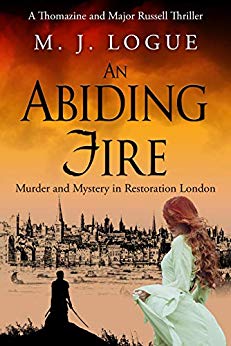
by TCW | Jan 29, 2019 | Book review
I seem to be getting more and more in to the 17th century. I really never meant to. It started with my visit to Edgehill and dinner with the Sealed Knot and then I found myself caught up in Jemahl Evans’ historical novel (as much history as novel in places), The Last Roundhead. After that I was plunged into the world of Mr Pepys, as summoned up in fantastic (and again historically grounded) detail by Deborah Swift in Pleasing Mr Pepys. I enjoyed that so much that I moved on to Deborah Swift’s story that took me to a dirtier, more dangerous and far less pleasant side of the same world in The Gilded Lily.
Perhaps Sapere Books have noticed, or perhaps I was just lucky, but they recently sent me a copy of M J Logue’s An Abiding Fire, set in Restoration London with a tiny walk-on part for Mr Pepys.
“Madam, if you consider that smellsock to be a decent anything you have yet to have any acquaintance with his wife. She has a number of stories to tell and none of them reflect very well on her husband.”
Poor Pepys, still routinely abused after more than three centuries, but that’s what you get for recording all your indiscretions in your diary.
Can you already tell that I liked this book? For I surely did. It’s a lovely, rollicking read with beautifully believable characters – many of them all more believable because they really existed and, as far as I can tell, Ms Logue has done her homework on the detail of their lives.
The story centres around the adventures of Major Russell, once one of Cromwell’s Roundheads, but now firmly on the side of the King. He has just married his childhood sweetheart, young, beautiful, and generally seen as somewhat out of his league. I’ve reviewed romances before and acquired a reputation as a nasty, cynical man who just can’t lose himself in a tale of true love. But here, I’m happy to turn into the fluffiest of romance-loving bunnies. We see the development of the relationship in the first months of a new marriage with chapters from the point of view of Major Russell alternating with scenes viewed through the eyes of Thomazine. There are rows, misunderstandings, reconciliations and all the passionate intensity of a relationship that is still setting out its own ground rules. It’s an absolute joy and would justify time spent reading all on its own.
This book, though, is not primarily a romance. (I suspect this is part of the reason that the romance element is so incredibly well done.) Britain is on the verge of war with the Dutch and Major Russell is one of King Charles’s spies. Soon he is caught up in a plot that seems designed to blame him for a sudden wave of murders and arson in London town. Who is behind these attacks, which seem designed to benefit the Dutch? Who is starting the rumours that claim Russell is a murderer and a traitor? (This is definitely the weakest point of the book. [POSSIBLE SPOILER if you really aren’t very good at whodunnits.] Who knows Russell well enough to be able to make such credible lies and who has a reputation throughout London, apparently, as a notorious gossip? Answer these two, not particularly difficult, questions and you will have identified the villain before poor Major Russell and wife have even got started.)
Never mind that Russell and his wife clearly aren’t the greatest detectives of their age. They’re brave and they’re fun and they love each other and they have beautiful friends with beautiful clothes who may be reprehensible but are wittily reprehensible, which seems to have been what mostly mattered in Charles II’s court.
There’s a climax with Thomazine suitably imperilled and Russell appropriately brave and the whole thing is set in the ropery at Chatham, which was a bonus as far as I’m concerned because I’ve been to the ropery at Chatham and it’s a remarkable building and I found the scene Logue describes came vividly to life for me.
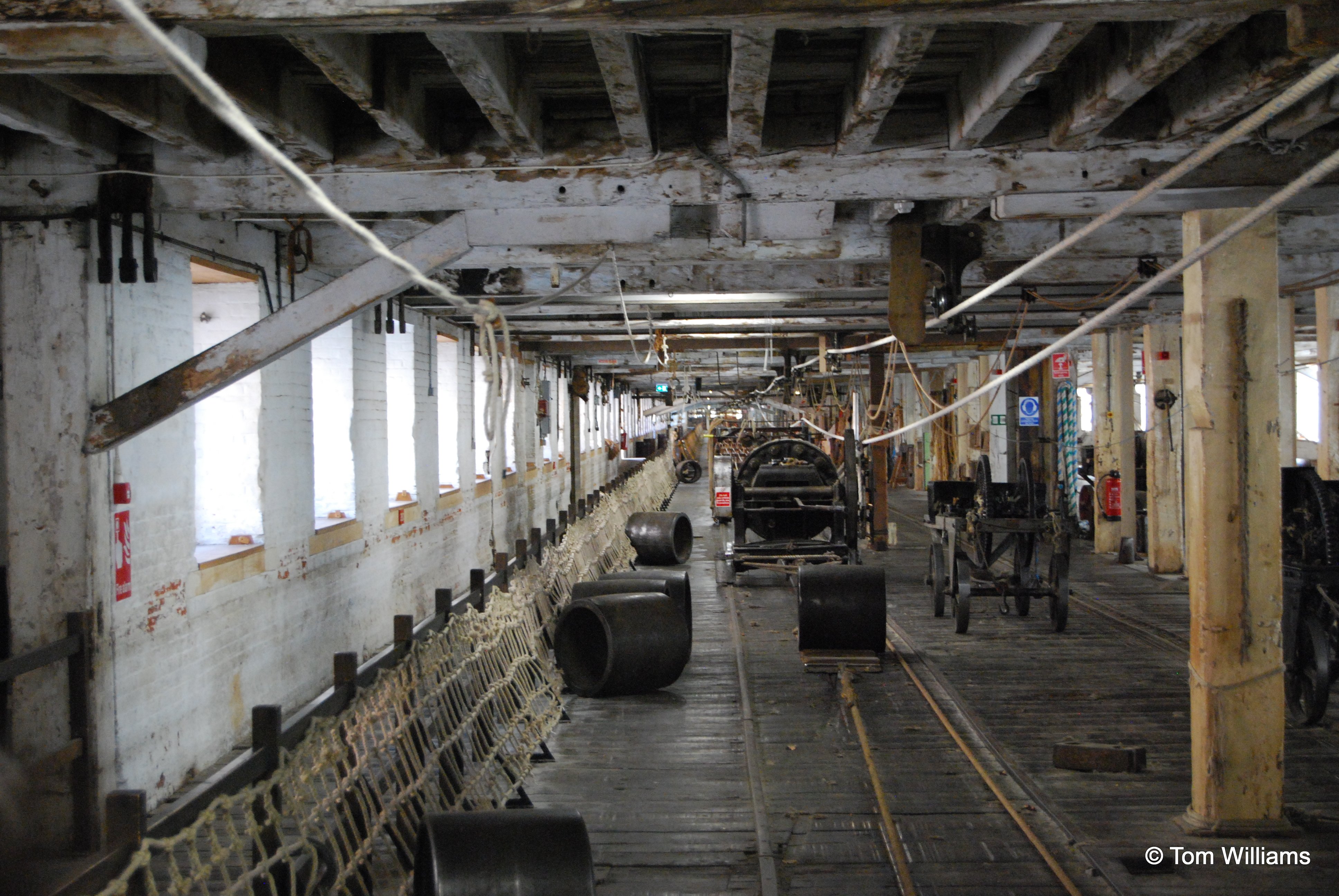 The ropery at Chatham
The ropery at Chatham
Of the book I’ve read recently in this period, Ms Logue’s is probably the least worthy and the most fun. But it is a solid piece of historical writing (the Historical Note is practically a text book in itself) and I’m all in favour of fun. If you read it quickly you’ll have finished almost in time for the sequel, A Deceitful Subtlety, published just about now.

by TCW | Jan 22, 2019 | Book review
Imperial Warriors has recently been re-published by Endeavour Media, who are my publishers. I’m interested in the Gurkhas, so I was happy to pick up a free copy of the book. It was intended as a little light reading in military history but I found myself fascinated by the story it tells and what it says about both the Imperial British past and the modern Army. When I sat down to write a review it ended up rather longer than I had intended – part summary, part critique and part essay. It’s probably rather like the book: worth dipping in and out of and reading the bits that interest you. Hopefully some of it will.
Some history
Tony Gould served with the Gurkhas in Malaya (as it then was) during his National Service. Like many British officers, he fell in love with the Gurkhas and extended his service to stay on and fight with them until his career was cut short by polio. This book starts with a personal account of his time in Malaya, which goes some way to explain his fascination with the Gurkhas before it plunges into a history of Nepal and the tribes that made up the kingdom.
The history is complicated and I must confess that I struggled to follow it. The crucial part, as far as the relationship between Britain and the Gurkhas is concerned, is that border disputes between Nepal and land controlled by the East India Company led to an invasion by the British in 1814. Following a British victory in which the Gurkha troops had distinguished themselves by their bravery the peace treaty allowed the British to recruit volunteers from the Gurkha army into the Indian army. (At the time it was not uncommon for troops in India to transfer their loyalty between rulers.)
By April 1815 a battalion of Gurkha troops was in action on behalf of the British. This battalion eventually became the 1st King George’s Own Gurkha Rifles, the first Gurkha troops formally incorporated into the British forces which they serve to this day.
A little bit of old-fashioned racism
Nepal was a country built on conquest and the conquered people retained their own identities (and their own vassal rulers). The first distinction the British made was between the “real Gorkahs” and the conscripts from the conquered territories. When the British first started to recruit Gurkhas into their service they were explicitly forbidden to recruit “real Gorkhas” on the grounds that people from the conquered tribes were likely to be loyal to their new leaders while the “real Gorkhas” would be less reliable.
This distinction between different Gurkha tribes eventually developed into a classificatory approach to the various tribes of Nepal that many nowadays (the book was first published in 1999) would reject as “race science”. Even Gould complains that the British carried this classification process to an extreme and a reader in 2018 might be uncomfortable with some of it but the differences between the various Gurkha tribes does seem to be important to an understanding of Nepalese history and the relationship between the Gurkhas and British. It can still produce some odd passages though, like these views ascribed to Lieutenant-General Sir George MacMunn:
In sum, the tall and fair-skinned people of the North West were martial; the short and dark South Indians were not. But where does that leave the Gurkhas who were neither tall nor particularly fair?
Gurkhas were covered by an aspect of the martial races theory mentioned by MacMunn – the philosophy of climatic difference, the supposed superiority of temperate zone man over tropical man…
The Gurkha’s Highland credentials, along with his evident military ability, then, gave him his ticket of entry to the exclusive martial races club.
It’s important to make it clear that Gould himself criticises this sort of talk, but there is inevitably a lot of it in the book. On the one hand, I share his admiration for the Gurkhas, but I feel uncomfortable with the idea that these soldiers are especially admirable by virtue of the fact that they are Gurkhas. The notion that ascribing positive characteristics to a particular ethnic group is just as racist as associating negative stereotypes with them can easily become “political correctness gone mad” but the recurring image of plucky little brown men performing extraordinary feats of valour and endurance under the strict but kindly supervision of fine upstanding Brits does begin to jar eventually. The Gurkhas are, indeed, Imperial Warriors and can easily elicit the patronisingly superior attitudes of an imperial age.
A dashed good tale
The book suffers, like many military histories, from a superfluity of anecdote, but the anecdotes are so good it is easy to forgive them. Whether it’s the story of Rifleman Lachhiman Gurung, who, in World War II single-handedly defended his position for four hours against repeated Japanese attacks despite having to fire one-handed having lost the use of an arm early in the action, or the career of Brigadier-General W D Villiers-Stuart who commanded 1/5th Royal Gurkha Rifles, the stories are all well-told and the gallantry described is humbling. The anecdotal approach can interrupt the time-line of the book, though. The British Army often seems to exist out of time anyway (a Guards regiment still dresses formally for black-tie dinners every night, apparently unaware that it is 2019) but the approach of this book can lead the reader from the mid-19th to the late-20th century with dizzying and confusing speed. Perhaps this reflects the actual experience of the Gurkhas. On one page they are invading Tibet in 1903 (very much in the 19th century imperialist tradition) and a few pages later they are fighting in the trenches of the First World War. If the abrupt transition is a jolt to the reader, you can only imagine what it must have been like for them. Unprepared, untrained and unequipped for this totally alien form of warfare their experience was horrendous and their reputation for courage and fighting spirit took a serious dent. By 1915, though, they were already getting the hang of this new form of warfare and by May two NCOs had received IDSMs. (It’s significant that their Distinguished Service Medals were prefixed as “Indian” reflecting the modified form of apartheid then common in the Army.)
Between 1914 and 1918 55,000 Nepalese were recruited to the British forces, a level of recruitment that had a significant effect on Nepalese society. More than a tenth (perhaps as many as a fifth) of the 100,000 Gurkhas mobilised during the war were killed, wounded, or missing in action. One commentator wondered if any country directly involved in the war lost such a high proportion of its fighting men.
The move to Indian independence
After the war, the Gurkhas found themselves busy with work which was unpleasant in a different way. The move towards independence in India meant that Gurkhas were used as riot police. They were involved in many disturbing incidents of which the most notable was Amritsar. The Gurkhas were not culpable, for they were acting under orders, but the shooting down of civilians was not something that a professional soldier ever enjoys being involved in.
Indian independence, when it came after World War II (where the Gurkhas distinguished themselves in the Far East) was to bring a crisis for the Gurkhas. The Indian government (many of whose members had previously denounced the Gurkhas as imperial mercenaries) now decided that they would be invaluable addition to the new Indian army. The British conceded the principal that around half of the Gurkhas serving under the British flag should transfer to the Indian Army. The mechanics of the process were not well handled. Gould suggests that Indian agents used underhand means to recruit many Gurkhas who would have preferred to serve in the British Army.
Talks on exactly how the Gurkha forces should be divided ran up against the reality of the timetable of partition and, according to Gould, “administrative convenience triumphed over ‘guiding principle’: choosing British Gurkha regiments on the basis of which battalions were stationed in Burma (and were due to leave the now independent country) was the easy option.” Some of the oldest Gurkha regiments found their allegiance transferred from Britain to India with some of the newest regiments put in their places. To a civilian whether your regiment was founded in 1815 or well into the 20th century might hardly be a relevant factor in deciding on operational deployments, but the Army cares about things like this. The casual casting aside of long established regiments with proud traditions (especially those that included the word “Royal” in their title) caused real distress to soldiers and officers alike. The distress was particularly acute for European officers, many of whom were effectively forced out of the Army as the policy of Indianisation took effect.
The End of Empire
Those Gurkha regiments that had transferred to Britain were, in 1948, designated the Brigade of Gurkhas. Ideally it would have been given time to get used to its new situation, but this was not to be the case. From 1948 to 1966 the Gurkha infantry battalions were almost continually engaged in fighting, first in Malaya and then in Borneo. In those 18 years the Brigade of Gurkhas lost 13 British officers and nearly 200 men. Yet the end of the war was followed immediately by cutbacks which saw many of the men sent back to civilian life in Nepal. Conditions for the returning soldier were unlikely to be good as Lieutenant-Colonel Langlands of 2nd Gurkha Rifles explained.
“For the first few months their children could get dysentry, some dying even before they reached their homes. Their small pension or gratuity would not be sufficient to feed them, so they would have to fight to win their food from the soil, and overcome hail, landslides, floods and fire. A few would invest their gratuity in a share of a taxi or a little shop. There were some who had no land to return to and their future was grim.”
Gould is understandably unimpressed by the behaviour of the Ministry of Defence whose civil servants (and those at the Treasury) he clearly considers responsible.
Paradoxically, though the British could be seen as having behaved very badly the sharp decrease in the number of men recruited to the Brigade of Gurkhas greatly increased competition for these places. The desirability of work with the Gurkhas was increased as Gurkha troops were more often serving in Britain where they were paid additional allowances to bring them into line with the British troops they served alongside.
Gould points out that the increased integration with the British Army meant that “improvements in pay and conditions served only to highlight residual inequalities”. This was the start of a campaign for changes in the pay and residency rights of Gurkhas which stretched well beyond the time this book was first published in 1999. The absence of anything bringing the book up-to-date is a definite weakness. Gould understands, as many commentators failed to, that a significant reason why the British employed Gurkhas since the early 19th century is that they were cheaper than British troops. There is a constant tension between the perfectly proper desire of Gurkhas and their supporters to see them employed on the same terms as British troops and the desire of Nepalese Gurkhas who have yet to join the army to continue to have their Brigade of Gurkhas to employ them.
For Gould the return of Hong Kong to China and with it the move of the Brigade of Gurkhas to Britain marked the end of what he calls “the Gurkha world”. The Gurkhas continue to serve, but it is clear that Gould’s love affair is dying. The Gurkhas he formed such an emotional attachment to were those of the 19th century and the world they lived in still survived in the regiments and customs of the Gurkhas he joined in 1957.
The Ghurkas today
Imperial Warriors is, as the title suggests essentially a history book. The Gurkhas he describes are an almost mythic race. Yet I know an officer who, presented with the job that might well be seen as career ending, was convinced that he still had a future with the Army when he was told that he could serve with Gurkhas. The British Army is built on tradition and regimental ties and as the old county regiments are merged or disbanded the Gurkhas maintain a proud tradition of 200 years of service to the British Crown. Gurkha regiments are remarkably effective infantry and as the Army is increasingly plagued by manpower shortages they are likely to have a role for a long time yet. Issues of pay and the treatment given to them when they retire touch many sensitive nerves: our attitudes to immigration; the economics of maintaining an army the country really can’t afford; and the residual racism of both the Army and the British establishment. Gould is not really interested in these issues. The book ends with him returning to Nepal and elegiac account of the countryside and the men who live there. The book is, indeed, a tribute to a world that has gone. It is, for all its rambling and anecdote, a worthwhile and fascinating read but there is another book to be written about the role of the Gurkhas in the modern army. It may not be as exciting and it will almost certainly be shorter, but it is a tale that deserves to be told.

by TCW | Jan 15, 2019 | Book review
I recently came across an old blog post by Deborah Swift on “Subtlety and Melodrama in Historical Fiction”. She explains that melodrama can slip in when the action becomes too fast paced. With historical novels one solution that she suggests is to “remind myself of the reality of the world I’m writing about”. It is the research, and the context in which the drama happens, that roots the story in reality and prevents the melodrama from getting out of hand.
It’s an approach that is very clear in The Gilded Lily. Ella and her younger sister Sadie have fled Westmoreland where Ella has robbed her dead master. (How involved was she in the death? It’s not at all clear.) They make their way to London where they soon discover that the money they have stolen is hardly enough to keep them. Their dreams of living as fine ladies meet the reality of life for young women in the mid-17th century city.
Deborah Swift certainly follows her own advice to root herself in the reality of the world that she is writing about. The book accurately reflects the dreariness and misery of life for the working classes of the time. The sisters first find work in a wig factory, their fingers constantly cut as they pull the threads through the hessian of the wigs, their necks and arms stung as their overseer lashes at them if she sees them lift their heads from their work. It’s an excellent historical account, but the drab monotony of their lives can’t help but rub off on the reader. Despite interludes of excitement when they think that their crime in Westmorland might be catching up with them, it can (despite Swift’s easy writing style) be a long and sometimes difficult read.
Eventually Ella, the more daring of the two, finds work with the distinctly suspect Jay Whitgift, the son of a successful pawnbroker. Ella has hopes of winning Jay’s heart and hence finally escaping from the drudgery of daily life and becoming a respectable woman. It is a measure of Swift’s skill in summoning up the period that we never for a moment think that she will succeed. Other novelists may give us girls who marry rich men and live happily ever after, but Swift is too firmly rooted in the reality of the 17th century to let us believe for a moment that this will not end badly.
It ends extremely badly indeed. True to the approach that she outlined in the blog post, Swift uses the solid historical background of the story to allow her to leap off into something that, without such careful preparation, could easily be completely over- the-top melodrama. Instead, I was gripped as a story of two poor girls making their way in the city turned into a tale of white slavery, murder, arson and a dramatic finale at the Frost Fair held on the frozen Thames. Suddenly I was turning the pages enthusiastically wanting to know if Ella could escape Jay’s murderous plan or if Sadie was indeed condemned to starve, literally locked in a garret.
The Gilded Lily offers an outrageously exciting story in a beautifully detailed period setting. If the beginning seems a little worthy, it’s well worth sticking with.
Recommended.
by TCW | Jan 8, 2019 | Book review
My blog is not a book blog, but on Tuesdays I quite often review books that have caught my eye. By and large I only write about ones that I’ve enjoyed, so here’s a canter through this year’s reviews which may give you some ideas for reading matter in 2019.
Historical
Historical Mystery stories
Given the general theme of my blog, I favour reviews of historical novels. There seems to be a lot of crossover between historical and detective fiction so for fans of whodunnits, here are a few possibilities. (Links are to my reviews.)
The Gilded Shroud (Elizabeth Bailey) Jane Austen meets Agatha Christie when the Marchioness of Polbrook, is strangled in her bed.

The Esther and Jack Enright Mysteries Victorian murder mysteries, with an inevitable nod in the direction of Jack the Ripper.
The Duke’s Agent (Rebecca Jenkins) It’s 1811 and when the Duke of Penrith’s agent suddenly dies, the extent of his peculation is revealed. Raif Jarrett agrees to use his leave from the Army to sort out the mess, but things are worse than they seem. Soon there is murder and riot and the agent himself finds his life at risk. Great fun and decently researched history.

Dear Laura (Jean Stubbs) As much psychodrama as detective story, I loved this book for its portrayal of the sheer awfulness of the lives of many women in the Victorian period.
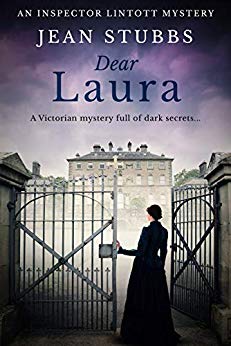
General Historical Novels
The Custom of the Trade (Shaun Lewis) First World War submarine adventure by an ex-submariner who writes with authority.

Pleasing Mr Pepys (Deborah Swift) Definitely one of the best books I read last year. Highly recommended.
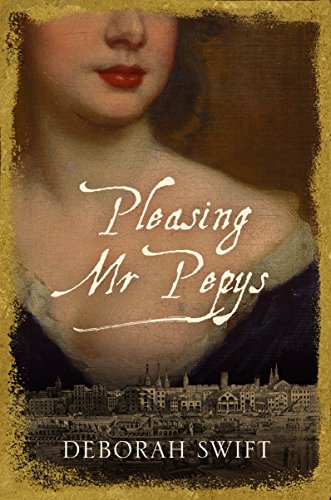
Chants to Persephone Book 5 of Jennifer Macaire’s series featuring Alexander the Great and a time-travelling historian. Huge fun and more solidly fact-based than you would expect.
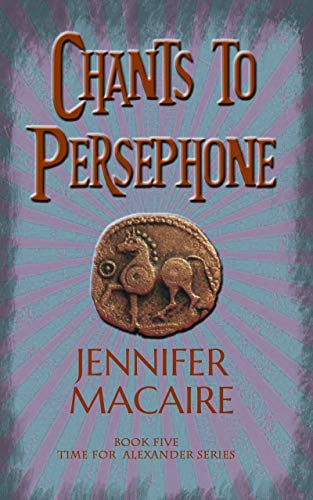
The Last Roundhead (Jemahl Evans) Spies and battle in an incredibly well researched story of the English Civil War.

A Kestrel Rising (SA Laybourn) Romance set against the background of the air war in World War II. Excellent.
New Grub Street (George Gissing) Technically this isn’t a historical novel because it wasn’t historical when it was written. It certainly does give a wonderful insight into the world of publishing at the end of the 19th century.
My own books
I think I’m admirably restrained in the amount that I write about my books but these are the links to posts about my own books in 2018.
Burke in the Land of Silver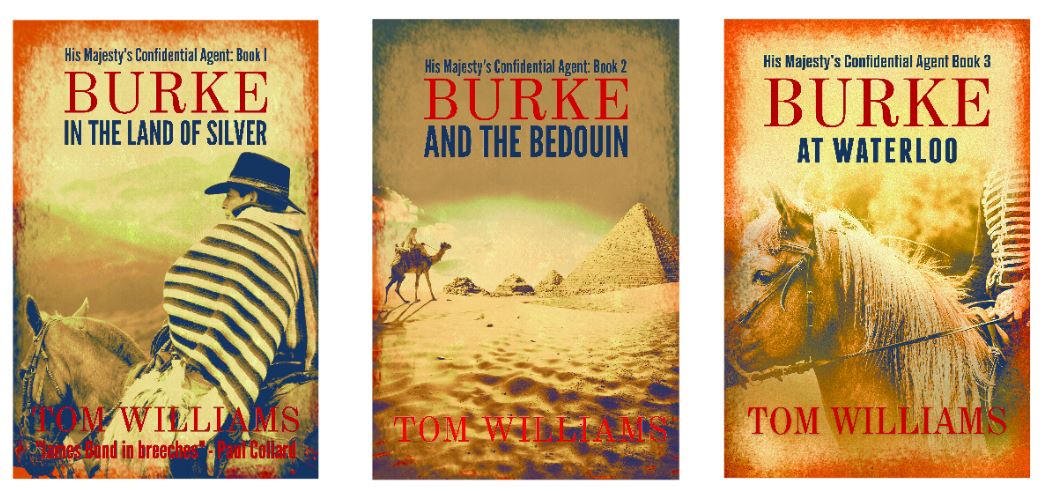
Burke and the Bedouin
The White Rajah
Cawnpore
Back Home
Non-fiction
I read spectacular amounts of non-fiction while researching but I don’t generally review them. I read this one because it was published by my own publishers, Endeavour Media, and I reviewed it because it was a fascinating book and well worth having a look at.
Roger Casement (Brian Inglis) Biography of the Irish Nationalist hanged by the British in 1916.

Thrillers and Detective Stories
When I’m not reading history for historical novels, I really enjoy relaxing with a good thriller or mystery book. These books are harder to write than people think and I’m happy to be able to point to some good ones.
Redemption Point (Candice Fox) Excellent Australian detective thriller.
Two very different murder mysteries that are still strangely similar I’ve reviewed The Mystery of Three Quarters (Sophie Hannah) and The Katharina Code (Jorn Lier Horst) together, comparing two very different takes on the murder mystery.
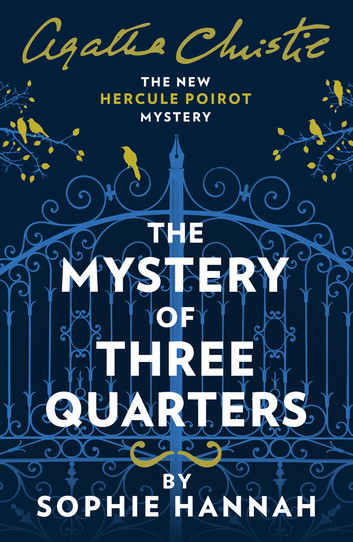
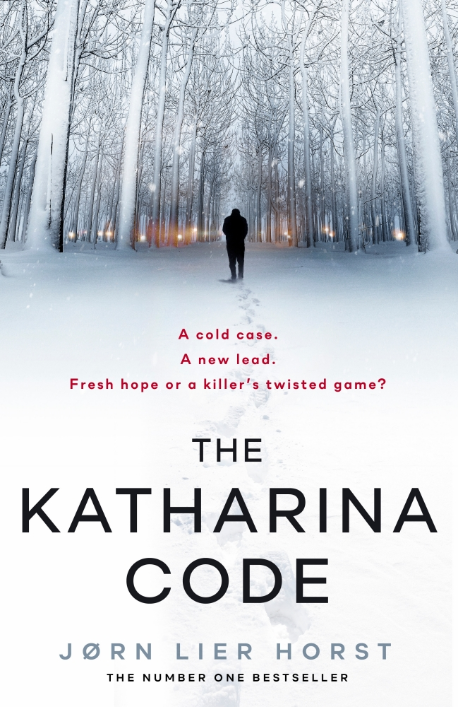
Assorted Sherlock Holmes pastiches Why is Sherlock Holmes still so popular? I had a look at books by Bonnie MacBird and Anthony Harowitz to see what the appeal is.
Dr Morelle Endeavour Media are republishing Ernest Dudley’s Dr Morelle books from the 1940s and 50s. They aren’t the best of the Golden Age detective stories, but the 1950s atmosphere is a treat. How can you not love a story which features a character called Aces La Rue?
Collateral Damage (James Long) Another one from Endeavour and well worth a look. Brilliant page-turner of a thriller set against the background of the first Gulf War.
The Darkness (Ragner Jonasson) Icelandic-noir. Very, very noir.

General Fiction
Ed Reardon’s Week (Christopher Douglas & Andrew Nickolds) The book of the radio series about an impoverished jobbing author. Brilliant.

Tipping Point (Terry Tyler) Dystopian near-future ‘Walking Dead’ but without zombies.


by TCW | Dec 18, 2018 | Book review
I seem to have been reading a lot of historical fiction lately featuring spunky women heroines who won’t be tied down by the conventions of the period they live in. They talk to men they haven’t been introduced to in the 19th century, they learn to read and write in the 16th century, and they express profoundly liberal opinions on matters like women’s suffrage and take up unlikely professions such as surgery almost whenever.
The truth is that life for women in, say, the 19th century could be pretty grim. Dear Laura shows us just how unpleasant it could be, even if you were a middle-class wife with a rich husband living in comfort in late 1890 Wimbledon.
Dear Laura is presented as a detective story, but it’s more a psychological thriller. We hear a lot nowadays about coercive control, as if it were a new thing. What Dear Laura makes terrifyingly clear is that “coercive control” is what many a Victorian paterfamilias would have called “family life”.
Jean Stubbs takes us into a well-off but not ridiculously rich Victorian home. The husband is a brute, who rules his little empire with a coldness bordering on sadism. His sons are sent off to boarding school, his daughter, despised because she is a girl, is left to the not-so-tender mercies of her nurse. Below stairs Cook rules over the alcoholic coachman, the maid and the skivvy, while Kate, the lady’s maid, occupies an ambiguous position between the regular servants and the better class of persons Upstairs. Laura, meanwhile, floats around the house looking beautiful, saying as little as possible and subject to constant headaches. Kept away from her children because her husband thinks she spoils them, she finds love only from her brother-in-law. Titus, her would-be lover, is, in his way, as objectionable as her husband: extravagant, promiscuous, selfish, but – unlike his brother – not actively cruel.
When Laura’s husband dies suddenly and anonymous letters hint at poison, the estimable Inspector Lintott is called to investigate and he uncovers a positive cesspit of secrets and lies that draw in almost everyone in the house.
This is by no means a perfect book. Some things are revealed in uncomfortable flashbacks than can take you out of the moment and leave you wondering what exactly is going on. Occasionally the sub-text of conversations is presented in italic, usually a sign that the characterisation and the dialogue aren’t quite up to carrying the load placed on them. I’m happy to forgive Ms Stubbs these flaws, though, because the book carried me along, anxious to find out the truth about these people – some good, some bad, but all trapped in the bonds of a social system in which “knowing your place” was the key to survival.
Above all, I welcomed a book that showed the truth of many Victorian women’s lives. For anyone who thinks Stubbs’ view is unrealistically bleak, the epigraphs with which she starts her chapters are revealing:
I know nothing like the petty grinding tyranny of a good English family… Florence Nightingale
Home is the girl’s prison and the woman’s workhouse. George Bernard Shaw
As a general rule, a modest woman seldom desires any sexual gratification for herself. She submits to her husband only to please him… William Acton MRCS
The book rings true to its period. Stubbs has done her research and occasionally ladles it in rather over-enthusiastically. On the whole, though, she does not allow details of the price of meat or the numbers dying of influenza to get in the way of her narrative. They are the background of a wider world, but her story dwells in one household and we see how its inhabitants cope with the social order that the wider world forces on them.
In summary, an excellent book and a wonderful antidote to some of the romantic nonsense being written about women living at a time where #MeToo was more #TheWayThingsAre.

by TCW | Dec 4, 2018 | Book review
Sapere Books have got into the way of offering me historical novels to review, which suits me because their editor seems to have an eye for a good book. (yes, they did offer to take mine but I’d just signed with Endeavour and that’s working out well for me.)
The latest is this tale of skulduggery and derring-do in the wilds of Northern England.
When the Duke of Penrith’s agent suddenly dies, the extent of his peculation is revealed. Raif Jarrett agrees to use his leave from the Army to sort out the mess, but things are worse than they seem. Soon there is murder and riot and the agent himself finds his life at risk.
That’s not much of a plot summary, but it’s all you’re getting from me. The plot is both ridiculously complicated and, at its heart, very simple, and definitely worth reading for yourself. It’s not the plot that kept me going, though, but the excellent characterisation. I warmed to the wounded soldier, Raif, and the man who looks set to become his side-kick (this is clearly the first book in a series), the poacher, Duffin. The love interest, Henrietta Lonsdale, is, as seems the way with this sort of book, rather forward for a woman of her time (it’s 1811), but not excessively so and she has the decency to be occasionally embarrassed by it. Minor characters are rounded people in their own right, especially the valet, Tiplady, “a Character, a family retainer of the old school”. I particularly enjoyed the corrupt magistrate, Raistrick, an excellent example of how much a really good villain can improve a book.
I can’t swear to every detail of the historical background, but it seemed sound and I didn’t find obvious errors pulling me out of the plot. I’m guessing Ms Jenkins rides (the way that horses are dealt with rings very true) but that she does not mix with the kind of company where she has to fake drinking from a bottle. (You stop the bottle with your tongue: her hero uses his teeth, which would have been messy.)
The writing is pacey and easy to read without ever being rushed and I found myself putting off other things to read on. It’s not a book that will change your life or give you brilliant insights into the human condition, but it will entertain splendidly. I recommend it.

 The ropery at Chatham
The ropery at Chatham

















